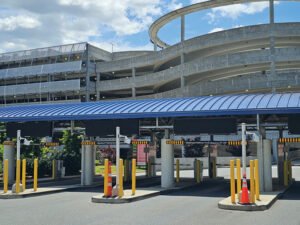“How can we make this simpler?” 
This is an important question for reviewing the use of License Plate Recognition in U.S. airports. Everybody seems to want or have data, but it is unclear how they wanted to use this data.
“What is the purpose of doing LPI every night? What is the benefit of having the license plate numbers in your hands?”
Sometimes, we are so focused on collecting data that we don’t take the time to stop and think about what why we are collecting it. License plate numbers can be profitable data, but the real income is transforming all those plates into information.

You don’t need Carplay to drive your car, of course, just as you don’t need LPR for a person to park.
But nowadays, a car without smartphone integration for better GPS, safer phone calls, and streaming your favorite music etc. is not essential, but it is almost impossible for a young person to do without it. It enhances the experience so much that most people never choose a car without it.
If airports are not sure if they need or want LPR, it is probably because we have not done our job correctly. We are so focused on selling a product that we forget that the product means nothing if we don’t explain the problem solved by purchasing it.
Most of the airports in the U.S. need this simplicity. They need simplicity in collecting the data and simplicity in the information provided, in order to make it useful.
The first step towards Simplicity is the hardware: the less the better.
Instead of dedicating one particular vehicle for Mobile LPI, let’s think about a solution that can be mounted and dismounted every day and on any sort of vehicle. Need to move from golf cart to car? No problem. Instead of controllers and loops for fixed LPR, let’s install an all-embedded camera. Incorporating such versatile and easily adaptable hardware solutions not only streamlines the implementation of LPR but also maximizes its flexibility and efficiency in diverse operational scenarios.
The second step in creating simplicity is choosing a few data points and concentrating on analyzing them to improve operations and safety.
One of the most common mistakes of technology (and I do this all the time, too) is thinking that the more data, the better. We think that data is always what we are missing, but it is actually much better to spend the time (and money) focusing on specific, measurable, and relevant data to get the right information out of it.
For the first time in 23 years of reading plates, we stopped being product-centric and we focused on data-driven solutions.
LPR is not just a camera, LPR is a technology that provides data. And data is useless if we don’t turn it into information that can deliver results.
LPR/LPI Solutions in Airports
As a standalone solution, an LPR-based system can help any vehicle-related operation by providing a searchable list of all the license plates on a premise. This helps in knowing the number of vehicles parked, where they come from, how often they come, how long they stay, etc.
But the real power comes when integrating LPR data with other systems; this is the step where we transform data into valuable information. Here are some of the solutions LPR provides:
Customer Experience: LPR data helps parking revenue/access control systems to link users and payments with their vehicles. This allows for frictionless entrance for monthly members or employees and fast exit for everybody who prepays for their parking. I will never forget the United pilot who destroyed a parking arm with an axe at Denver International Airport because it wouldn’t let him out. How frustrating can it be to feel imprisoned after a long day for no reason? Thanks to LPR we can even think about a gateless airport in the near future.
Security: Via integration with security forces systems, LPR is key to detecting stolen or wanted vehicles that may be on the premises. Performing Mobile LPI every night also controls abandoned vehicles, which is extremely common in airports.
Frauds: Parking frauds become harder to pull off if LPR-based surveillance is on. Fraudulent lost tickets are not an option anymore since we know exactly when cars enter the facility and even how many nights these cars have been parked in the same spot.
Time to Destination: Another great way to use LPR in airports is by calculating the time between multiple points. This is done in Paris’ Charles de Gaulle Airport; they have combined it with LED signs that inform the drivers how long it will take them to arrive at their terminal.
This is some of what LPR can accomplish in airports right now. What about the future?
Projections for LPI Applications for the Future Autonomous Vehicles: As self-driving cars become more prevalent, LPR will play a vital role in tracking and identifying these vehicles on the road. (And we will probably use one to perform the LPI).
Environmental Initiatives: LPR can assist in enforcing regulations related to emissions and pollution by monitoring vehicle movements and emissions created by these vehicles.
Personalized Services: Businesses will leverage LPR data to offer personalized services, from customized marketing campaigns to tailored parking experiences.
As a marketing geek and someone always looking for more data (my bad, since I don’t have enough time to analyze the data I already have), I can see the marketing potential of LPR. Airports could be welcoming guests by their name, and analyzing their behaviors to provide better customer service.
The benefits of adding LPR in airport parking is vast. With the right technology and streamlined data, drivers can have a seamless airport experience. It is our job to share our knowledge while focusing less on selling products and more on providing information that adds value every day.
Laura Caillot is the General Manager at Survision. She can be reached at LCA@survisiongroup.com

















